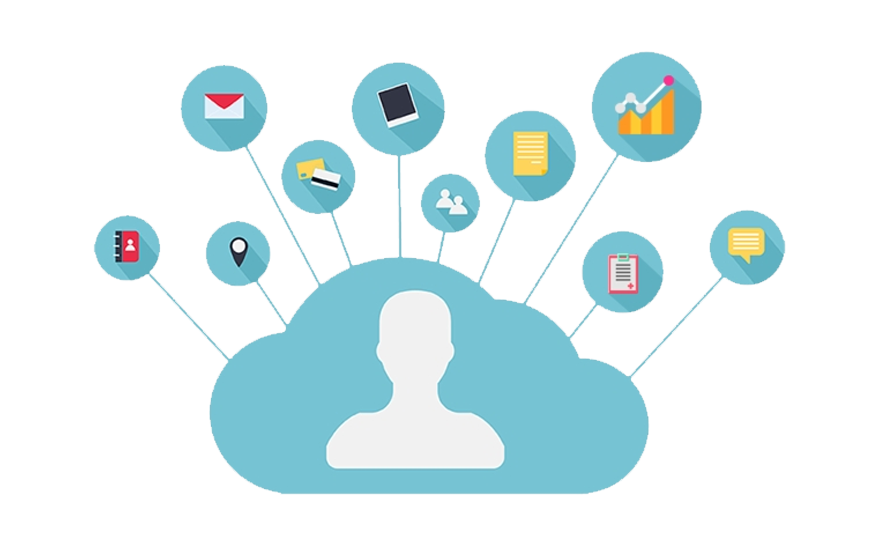What is a Student Information System (SIS)?
A Student Information System (SIS) is software designed exclusively to administrate student data in schools and other educational institutions.Students can complete their administrative tasks in one location using the self-service option provided by the Cloud-based Student Information System. Academics and staff can benefit from the Student Data Information Management System by helping to simplify and integrate work processes.
A Student Information System Software provides exceptional efficiency when relating to student information because every record is automatically arranged and saved for convenient access. The Student Information Management System (SIMS) gives schools and educational institutions complete control over their data while lessening the strain on staff members. Additionally, it helps teachers by keeping them updated on students' academic progress and helping them develop data-driven decisions to better their education. The administration of enrollment and admissions is enhanced by online registration, document submission, and applicant tracking.
In summary, the Best Student Information System promotes collaboration, enhances data quality, equips teachers with helpful knowledge, and simplifies administrative tasks. That leads to improved learning opportunities for teachers, parents, and students. Enabling data-driven decision-making and modernizing schools and educational institutions are crucial in the ever-evolving education industry.
Being cloud-based, the Student Information System (SIS) can be adjusted as needed to ensure that it expands with an institution. It is easy to use because Popular Student Information Systems have open interfaces and can be integrated with database systems and other school applications. GeniusEdu Student Information System's main advantage is its centralized store for student data. As a result, staff can navigate between several databases or systems easily to find the required information. It can also decrease errors and increase data accuracy because data only needs to be recorded once and is accessible throughout the Student Information Systems k-12.
Features Of Student Information Management System (SIMS)
GeniusEdu Student Information System: A unique solution for growing your Schools and other Education InstitutionsGenius Student Online Admission Management Software Helps to Get Ahead of the Curve
Centralized Student Data Management
The school can organize and manage all data, including student personal information, academic records, documents, and attendance information. It can easily export the information at any moment and utilize it to guide their choices. By centralizing student data into a single system, our Top Student Information Systems facilitates access to and management of data such as contact details, attendance records, grades, and enrollment records.
Scalability and Customization Platform
SIS Student Information System is customizable and flexible in adapting to changing requirements and procedures since they are easily scaled and configured to meet the unique requirements of different schools and educational institutions. The school can also choose to pay for what they use. Establishments do not need to hire hardware or software engineers, another advantage of cloud-based student information systems based on php and mysql.
Transparent and Effective Communication
Running any organization efficiently and smoothly depends on having effective, transparent, and timely communication. With technologies like announcements, notifications, and messaging, the Student Information Management System (SIMS) helps stakeholders remain up-to-date and communicate better by facilitating communication between executives, teachers, students, and parents. Also, it enables management to contact everyone quickly and easily at any time.
Automate Attendance Tracking
Integrate RFID and biometrics to automate attendance tracking. Our secure and Best Student Information System helps the admin to track attendance by subject or day, notify parents immediately if their child misses any courses, and allow them to stay informed. Our Cloud-based Student Information System helps teachers and administrators track student attendance and create statistical analyses on trends and patterns in attendance.
Simplified Administrative Tasks
Administrative duties, including scheduling, grading, reporting, enrollment, etc, are all automated by the Student Information Management System (SIMS), which minimizes errors, cuts down on paperwork, and gives administrators more time to work on strategic projects. GeniusEdu Student Information System, designed exclusively for educational institutions, helps schools plan and manage each stage of the student admissions procedure.
Academic Performance Analytics and Reporting
SIS Student Information System typically provides academic performance reporting and analytics tools for creating various reports, including attendance descriptions, student achievement reports, demographic data analysis, and measures for measuring institutional effectiveness. SIS provides configurable analytics and reporting on numerous aspects of school operations, which administrators can use to make data-driven decisions to enhance performance.


Cloud-based Server for Data privacy and security
Data security and privacy are significant to Student Information System Software, which implements role-based authorization, encryption, and stringent adherence to data protection rules to preserve sensitive data. Student data is encrypted and stored on a cloud-based server by the SIS Student Information System to prevent loss or hacking. Additionally, storing data on a cloud server offers immediate data backups.
Enriched Parental Engagement
Parents are encouraged to get more involved in their child's education and to have positive conversations with teachers by having real-time access to information about their child's behavior, attendance, and academic performance through Popular Student Information Systems. A Student Data Information Management System facilitates communication between parents and educators. It enables them to offer a positive learning environment for the student.
Enhanced Time & Resource Utilisation
Student Information System is an automated system. All activities are conducted online, saving significant paper and other helpful resources. The system's user interface is also simple and quick to use; thus, end users won't need specialized training or expertise. In addition to saving you valuable time, this reduces the amount of essential resources, such as personnel, that you use. Rather than spending endless hours filling out the same paperwork, your personnel may work on other vital projects.


Improve Productivity
The data is stored on the Cloud via the user-friendly Student Information Management System (SIMS). Without the SIS Student Information System, the admin must repeatedly enter the exact data for various needs, such as library cards, transportation, examination, online fee payments, and hostel accommodations. However, once data is entered into a student management system, it is synchronized across all units, saving staff members from continually entering data by hand.
What are the benefits of the Student Data Information Management System?
The benefits of the Student Information Management System (SIMS) are listed below for parents, teachers, and school administrators.For Administrator
For Teachers
For Students
For Parents
Frequently Asked Questions
-
What is a Student Information System, and how student information systems work?
A Student Data Information Management System is a cloud-based ERP platform that helps schools and other educational institutions manage student data more quickly and efficiently. It facilitates their ability to gather and save data on a single platform for easy access. It enables effective collaboration and efficient monitoring of student performance and institutional information by academics, administrators, students, and parents.
-
What is the purpose of the Student Information System Software?
Our Cloud-based student information systems / Student Information systems have several advantages for schools and other educational institutions. They reduce workload, boost administrative efficiency, and facilitate improved parent-student and teacher-student communication. Teachers may give high-quality instruction by making data-driven judgments when they have instant access to student data. The SIS monitors all aspects of the student lifecycle. She promotes increased efficiency, managing fee management, hostel management, alum management, library management, transport management, examination management, and much more.
-
What are the advantages of a Student Information System (SIS)?
The following are the advantages of a Campus Management Student Information System such as:
- Monitoring both administrative and non-administrative tasks
- Centralized platform with security and access based on roles
- Streamlining the online admissions procedure
- Effective communication between parents, students, and teachers
- User-friendly navigation and support for multiple languages
- Dashboards with artificial intelligence to analyze student progress
-
How do you choose the Best Student Information System for education?
Schools always make sure the Student Information Systems k-12 they select integrate with the following aspects:
- Cloud-based platform with data privacy and security
- Simplifying day-to-day activities
- Enhanced communication and collaboration
- Accelerated everyday activities
- Reliable ERP supplier with top-notch assistance
- Easy-to-implement and User-friendly platform
-
How does a Student Information Systems work?
Our Popular Student Information Systems is a cloud-based ERP platform with several advantages for schools and other educational institutions. In addition to facilitating better parent-student and teacher-student communication, they lessen workload and increase administrative efficiency. Teachers can deliver superior instruction by using data to inform their decisions when they have immediate access to student information. The SIS monitors all aspects of the student lifecycle. She promotes increased efficiency, managing fee management, hostel management, alum management, library management, transport management, examination management, and much more.
-
What is the difference between student information and learning management systems?
A learning management system (LMS) and a student information system (SIS) are different types of software used for various tasks in a school.
A student information system's main job is to keep track of administrative data about students, like their personal information, registration information, attendance records, marks, and other academic data. It's a central place to store student records, making jobs like managing registration, making schedules, and filing reports easier. The SIS makes it easier for managers, teachers, and staff to access important student information and streamline routine tasks.
On the other hand, a learning management system is a tool that helps deliver and control the learning process. It has features and tools for making educational material like online classes, homework, quizzes, and tests and keeping track of it. Many LMSs have many features, such as tools for creating material, managing courses, working together, and grading. The LMS makes online learning easier, keeps students interested, and lets teachers monitor and grade student progress.
In summary, the primary difference between a student information system and a learning management system is their primary focus. The SIS manages student administrative data, while the LMS focuses on facilitating learning and delivering educational content.
-
What is the difference between content management and student information systems?
Content management systems (CMS) and student information systems (SIS) serve different purposes within an educational institution.
A content management system is software designed to create, organize, and manage digital content. It is commonly used for websites, allowing users to create and update web pages, upload files, and manage multimedia content. A CMS provides content creation, editing, version control, and publishing tools. It enables multiple users to collaborate on content creation and execute permissions for access and editing.
In contrast, a student information system is specifically designed to manage administrative data related to students. It focuses on student records, enrollment details, attendance, grades, and other academic information. The SIS serves as a centralized database for student data and supports various administrative processes, such as enrollment management, scheduling, and reporting. It provides administrators, teachers, and staff tools to access and manage student information efficiently.
In summary, while content management systems are focused on managing digital content, student information systems are designed to address student administrative data.
-
What programming language is used for student information systems?
The programming language used for developing student information systems can vary depending on the specific implementation and the technology stack chosen by the developers. Some commonly used programming languages for building student information systems include:
Java: Java is a popular programming language for developing enterprise-grade applications. It offers robust features, platform independence, and a wide range of libraries and frameworks that can be used for building student information systems.
PHP: PHP is a server-side scripting language commonly used in web development. It is widely accessible and has a large community of developers. PHP also integrates well with databases, which makes it suitable for building student information systems.
.NET: The .NET framework, developed by Microsoft, provides a platform for building web applications and enterprise-grade systems. It supports multiple programming languages, such as C# and VB.NET, which can be used to create student information systems with rich features.
Python: Python is a versatile and easy-to-learn programming language known for its simplicity and readability. It offers various frameworks, such as Django and Flask, which can be used to develop student information systems efficiently.
It is important to note that the choice of programming language depends on factors such as the development team's expertise, project requirements, and the overall technology stck chosen to implement the student information system.
-
What should you look for in a student information system?
Several factors should be considered when selecting a student information system (SIS) for an educational institution. Here are some key aspects to look for:
Data Management: A good SIS should provide a comprehensive and efficient way to manage student data, including personal information, enrollment details, atendance records, grades, and other academic data. It should offer secure data storage, easy data entry, and robust reporting capabilities.
Accessibility and User-Friendliness: The SIS should have a user-friendly interface that is easy to navigate for administrators, teachers, students, and parents. It should provide role-based access control, allowing different users to access appropriate information and functionalities.
Integration Capabilities: The SIS needs to integrate with other systems used within the institution, such as learning management systems, content management systems, and financial systems. Integration facilitates seamless data exchange and avoids data duplication.
Customization and Scalability: The SIS should be customizable to meet specific institutional requirements. It should allow administrators to configure workflows, add custom fields, and adapt the system to the institution's unique needs. Additionally, it should be scalable to accommodate the institution's growth and handle increasing data volumes.
Support and Training: A reliable SIS provider should offer comprehensive support, including regular updates, bug fixes, and technical assistance. They should also provide training resources, documentation, and user guides to help the institution's staff effectively utilize the system.
Security and Data Privacy: The SIS must prioritize the security and privacy of student data. Look for features such as data encryption, role-based access control, and compliance with data protection regulations.
Cost and Return on Investment: Consider the cost of implementing and maintaining the SIS, including licensing fees, support costs, and infrastructure requirements. Assess the potential return on investment by evaluating the efficiency gains, improved data accuracy, and administrative cost savings the system can provide.
It is advisable to conduct thorough research, analyze organizational requirements, and involve key stakeholders when selecting a student information system.
-
How much does a student information system cost to implement?
The cost of implementing a student information system can vary significantly depending on several factors, including the size of the educational institution, the specific features and functionalities required, the chosen vendor, and the implementation approach. Here are some cost considerations for implementing a student information system:
Customization and Integration: Additional costs may apply if customization or integration with other systems is required. Customization can involve tailoring the system to meet specific institutional needs, while integration ensures seamless data exchange with other platforms.
Implementation Services: GeniusEdu offer implementation services, including system setup, data migration, and training. These services may be bundled into the overall cost or charged separately.
Infrastructure Costs: Consider the hardware and network infrastructure required to support the student information system. This can include servers, networking equipment, and data storage solutions. Cloud-based systems may have recurring operational costs instead.
Maintenance and Support: Ongoing maintenance and support costs should be considered. This includes software updates, bug fixes, technical assistance, and access to customer support resources.
It is easier to consider an institution's specific requirements to provide an exact cost. Typically, a student information system implementation can range from a few thousand dollars for smaller institutions to tens or hundreds of thousands for larger organizations. It is recommended to request quotes from GeniusEdu, negotiate pricing, and consider the long-term value and return on investment when assessing the cost of implementation.
-
How do we protect student information in school systems?
Student information in school systems is protected by implementing a comprehensive School Management System like the one offered by GeniusEdu. This software integrates multiple educational processes into one centralized system, ensuring data security and privacy. The system has features such as user authentication, role-based access control, data encryption, and regular data backups to safeguard student information from unauthorized access or breaches. By utilizing robust cloud-based ERP solutions, educational institutions can maintain the confidentiality and integrity of student data.
-
What did people do before the student information system?
Before the advent of student information systems, educational institutions relied on manual and paper-based methods to manage school operations and student records. Enrollment, fee management, attendance tracking, and exam management were labor-intensive and prone to errors. Administrative staff had to handle paperwork, maintain physical files, and manually update records, leading to inefficiencies and delays in information retrieval. The lack of an automated system resulted in difficulties in data management, communication, and decision-making processes within educational institutions.
-
How is an information system helpful for students?
An information system such as the one provided by GeniusEdu plays a crucial role in enhancing the learning experience for students. Through features like online enrollment, virtual classrooms, learning management systems, and academic management tools, students can access educational resources, submit assignments, communicate with teachers, and track their academic progress seamlessly. The system streamlines administrative processes, improving efficiency and transparency in school operations. Students benefit from personalized learning experiences, increased access to educational materials, and enhanced communication channels with educators and peers by utilizing information systems.


